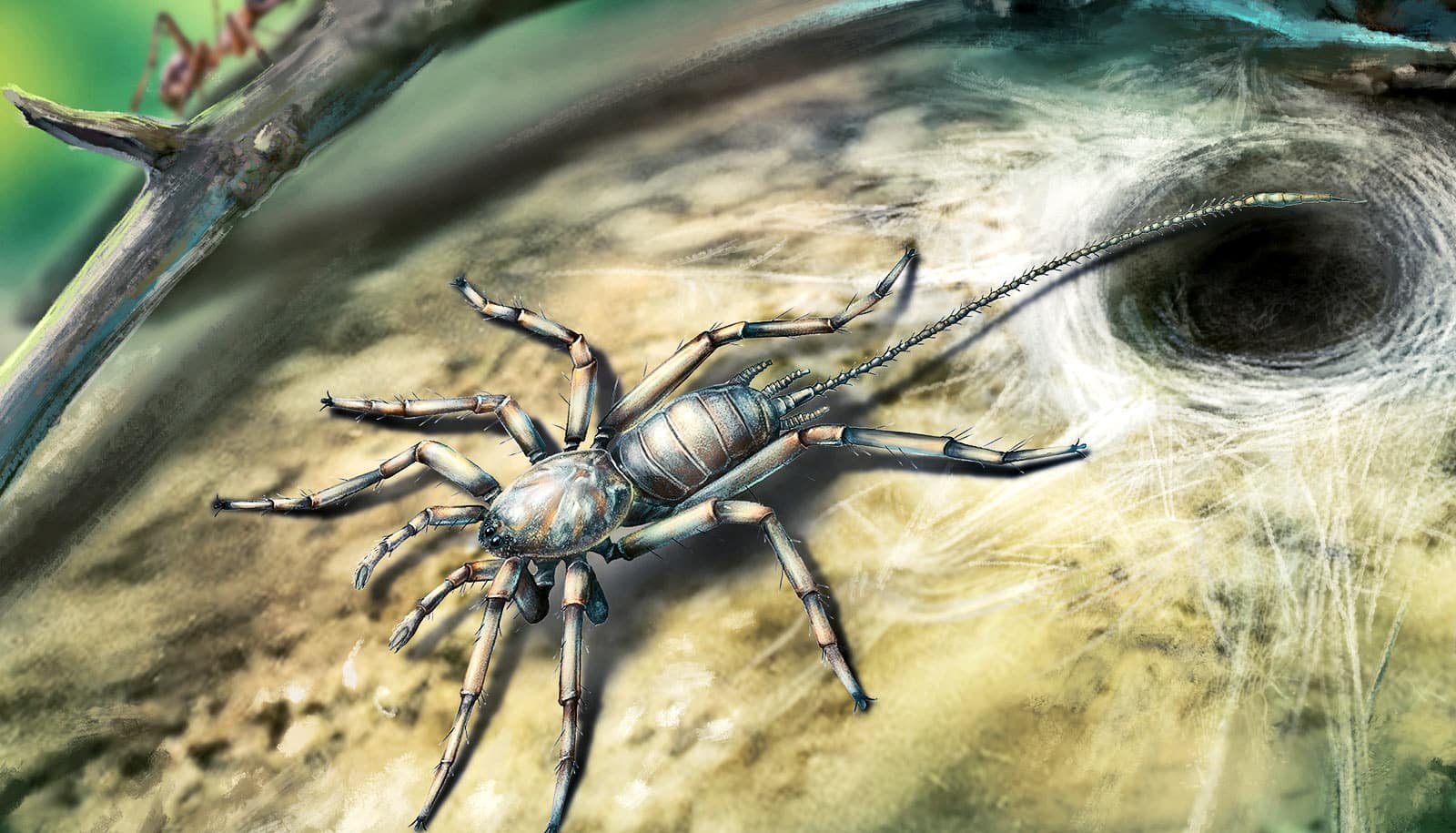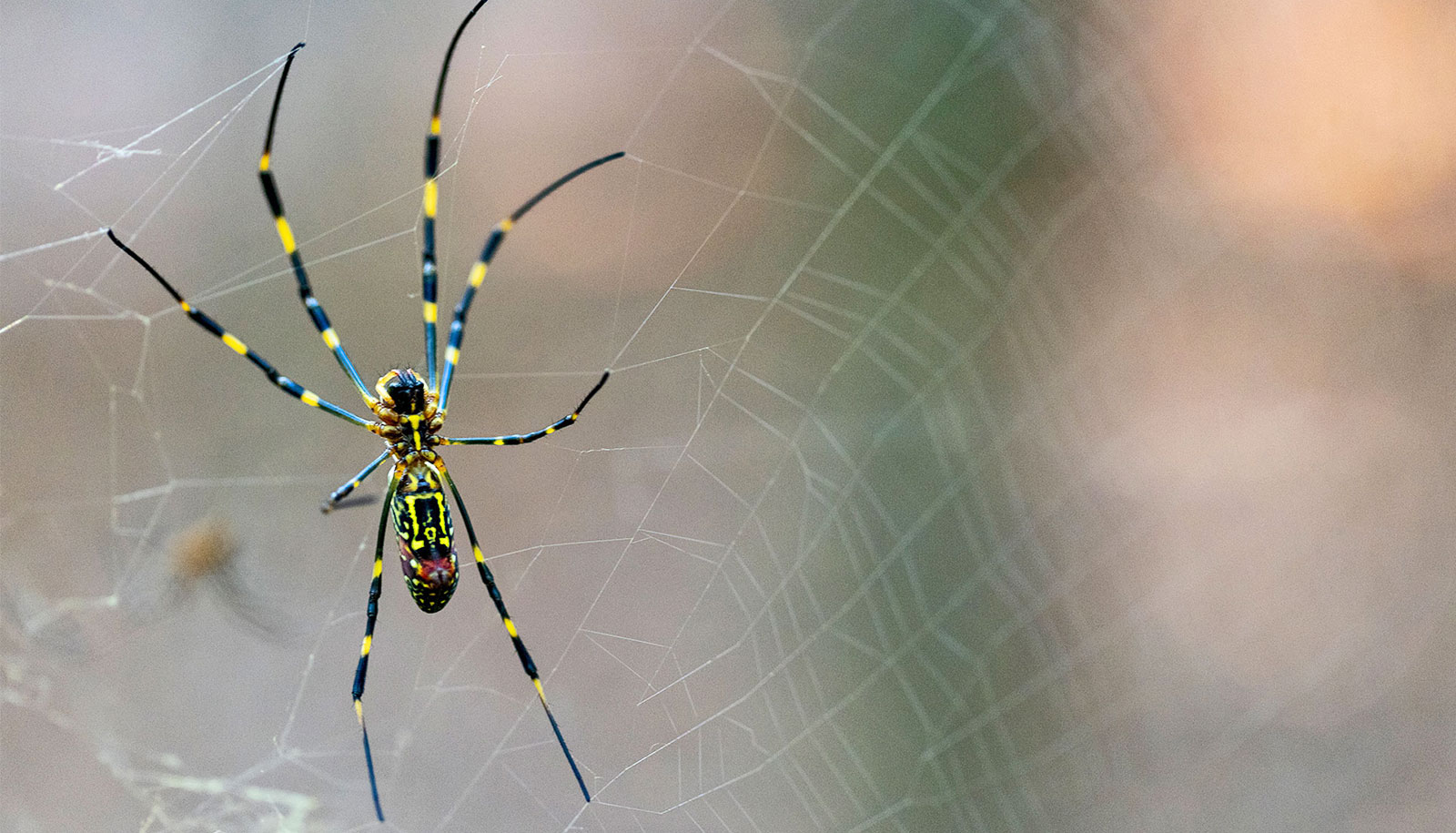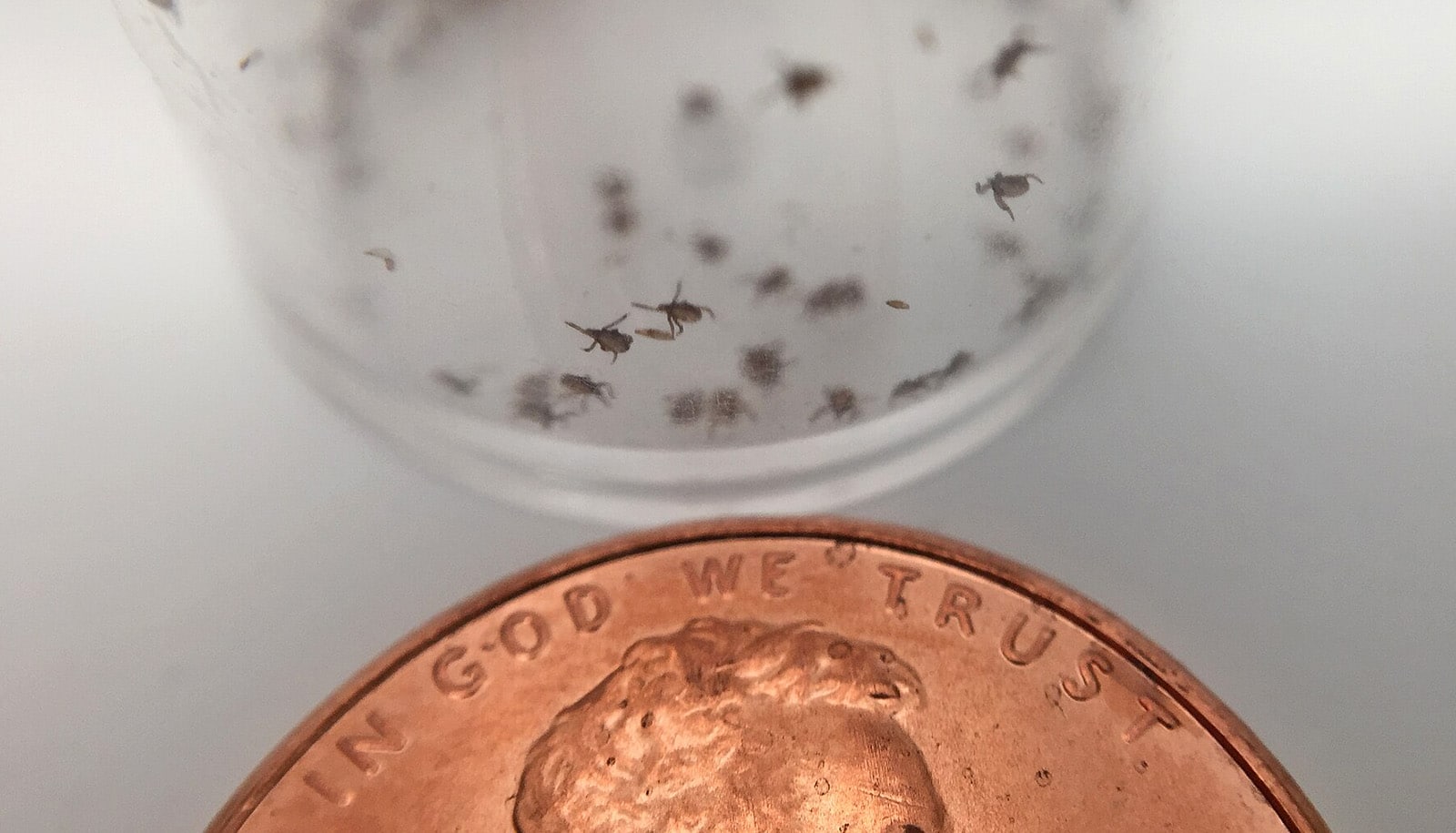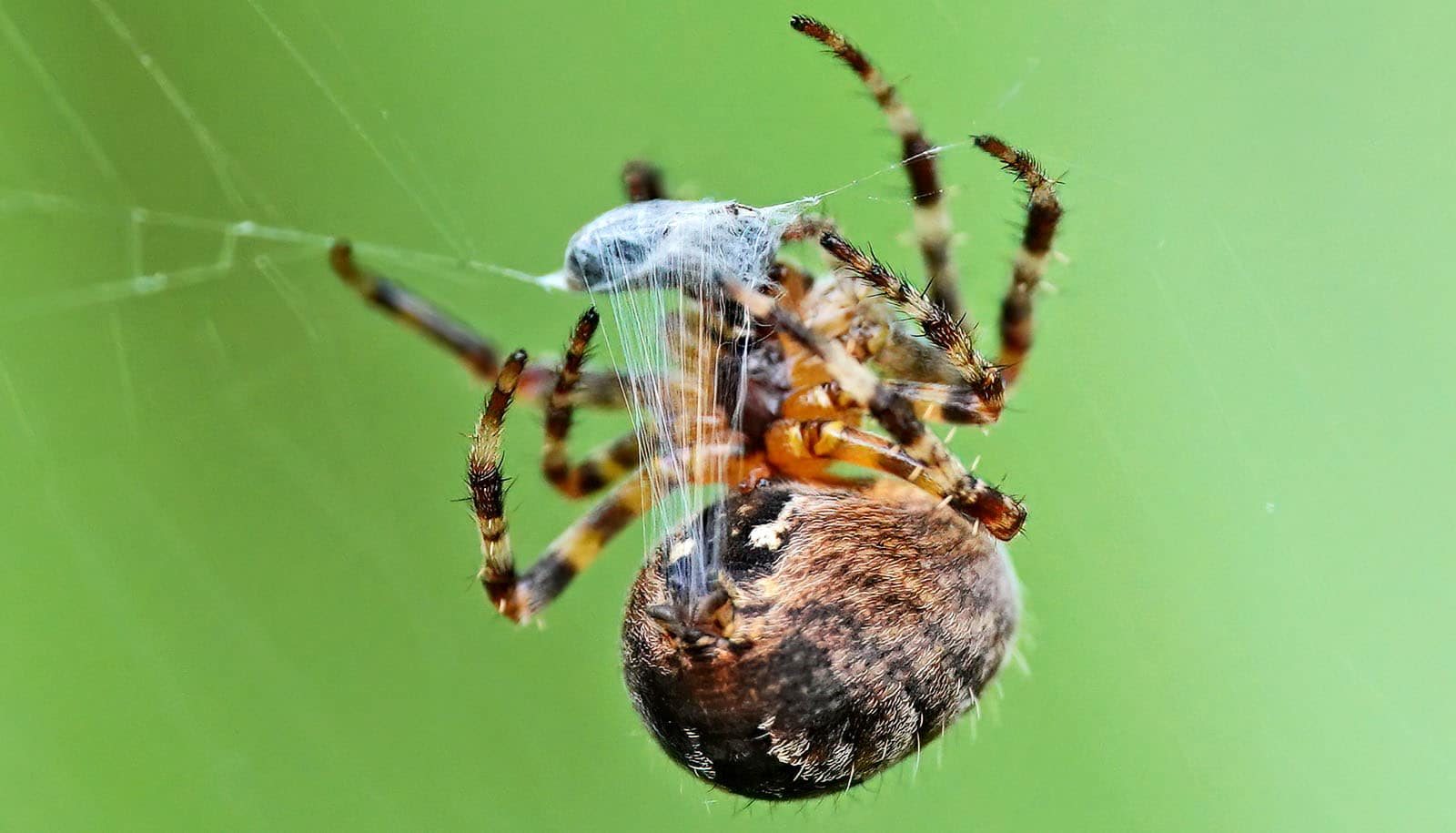Researchers have discovered a new species of arachnid, resembling a spider with a tail, in amber from Myanmar (formerly Burma), from the mid-Cretaceous age around 100 million years ago.
“There’s been a lot of amber being produced from northern Myanmar and its interest stepped up about ten years ago when it was discovered this amber was mid-Cretaceous; therefore, all the insects found in it were much older than first thought,” says Paul Selden of the Paleontological Institute and geology department at the University of Kansas.
“It’s been coming into China where dealers have been selling to research institutions. These specimens became available last year to Nanjing Institute of Geology and Paleontology.”
‘Like an antenna’
The new animal resembles a spider with fangs, male pedipalps, four walking legs, and silk-producing spinnerets at its rear. However, it also bears a long flagellum or tail.
No living spider has a tail, although some relatives of spiders, the vinegaroons, do have an anal flagellum. Four new specimens have been found, and all are tiny, about 2.5 millimeters body length, excluding the nearly 3-millimeter-long tail.
“It makes us wonder if these may still be alive today. We haven’t found them, but some of these forests aren’t that well-studied…”
“Any sort of flagelliform appendage tends to be like an antenna,” Selden says. “It’s for sensing the environment. Animals that have a long whippy tail tend to have it for sensory purposes.”
The find confirms a prediction made a few years ago by Selden and colleagues when they described a similar tailed arachnid, which resembled a spider but lacked spinnerets.
These animals, from the much older Devonian (about 380 million years ago) and Permian (about 290 million years ago) periods, formed the basis of a new arachnid order, the Uraraneida, which lies along the line to modern spiders.
“The ones we recognized previously were different in that they had a tail but don’t have the spinnerets,” Selden says. “That’s why the new one is really interesting, apart from the fact that it’s much younger—it seems to be an intermediate form. In our analysis, it comes out sort of in between the older one that hadn’t developed the spinneret and modern spider that has lost the tail.”
The new animal, called Chimerarachne after the Greek mythological Chimera, a hybrid creature composed of the parts of more than one animal, lies one step closer to modern spiders on account of its possession of spinning organs.
Spider speculation
Selden says little of the tiny spider’s day-to-day behavior could be determined.
“We can only speculate that, because it was trapped in amber, we assume it was living on or around tree trunks,” Selden says. “Amber is fossilized resin, so for a spider to have become trapped, it may well have lived under bark or in the moss at the foot of a tree.”
Spiders debunk the ‘Great Man Theory’
While the tailed spider was capable of producing silk thanks to its spinnerets, it probably didn’t construct webs to trap bugs like many modern spiders.
“We don’t know if it wove webs,” Selden says. “Spinnerets are used to produce silk but for a whole host of reasons—to wrap eggs, to make burrows, to make sleeping hammocks, or just to leave behind trails. If they live in burrows and leave, they leave a trail so they can find their way back.
“These all evolved before spiders made it up into the air and made insect traps. Spiders went up into the air when the insects went up into the air. I presume that it didn’t make webs that stretched across bushes,” he says. “However, like all spiders it would have been a carnivore and would have eaten insects, I imagine.”
Selden says the spider’s remote habitat made it possible that tailed descendants may still be alive in Myanmar’s backcountry to this day.
“We know a lot about the Burmese biota during the Cretaceous,” Selden says. “It was a pretty good tropical rainforest, and there are a great many other arachnids we know were there, particularly spiders, that are very similar to the ones you find today in the southeast Asian rainforest.
‘Deadly’ flower trapped in amber is new to science
“It makes us wonder if these may still be alive today. We haven’t found them, but some of these forests aren’t that well-studied, and it’s only a tiny creature.”
The study appears in Nature Ecology & Evolution.
Source: University of Kansas



